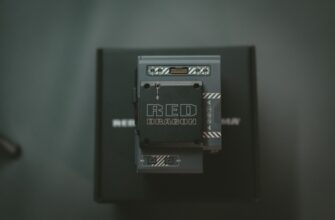Why Crypto Wallet Security Can’t Be Ignored
As cryptocurrency adoption surges, securing your digital assets becomes non-negotiable. Unlike traditional banks, crypto transactions are irreversible – once funds are stolen, recovery is nearly impossible. For beginners, understanding wallet security isn’t just helpful; it’s the foundation of your entire crypto journey. This guide breaks down the best way to secure crypto wallet for beginners with actionable steps anyone can implement today.
Crypto Wallet Security: Core Concepts Explained
A crypto wallet doesn’t actually “store” coins like a physical wallet. Instead, it safeguards two critical elements:
- Private Keys: Secret codes granting ownership and access to your assets (never share these!)
- Public Addresses: Public identifiers for receiving funds (safe to share)
Wallet types impact security:
- Hot Wallets: Internet-connected (e.g., MetaMask, Exchange Wallets). Convenient but vulnerable to online threats.
- Cold Wallets: Offline storage (e.g., Ledger, Trezor). Highest security for long-term holdings.
Step-by-Step: Securing Your First Crypto Wallet
Follow this beginner-friendly process to lock down your assets:
- Choose Wisely: Opt for reputable wallets like Exodus (hot) or Ledger Nano S (cold). Avoid obscure apps.
- Generate Strong Recovery Phrases: When setting up, write down the 12-24 word seed phrase by hand on paper. Never store digitally.
- Enable Multi-Factor Authentication (2FA): Use Google Authenticator or Authy – never SMS – for all wallet logins.
- Create Uncrackable Passwords: Combine 12+ characters with symbols, numbers, and uppercase letters. Use a password manager.
- Verify Transactions Meticulously: Double-check wallet addresses before sending funds. Malware often alters copied addresses.
- Regularly Update Software: Install wallet and device updates immediately to patch vulnerabilities.
Non-Negotiable Security Habits for Beginners
Beyond setup, maintain these practices:
- Never share seed phrases or private keys – legitimate services will never ask for them
- Use hardware wallets for significant holdings (>$1,000)
- Bookmark wallet sites to avoid phishing scams from fake URLs
- Enable transaction signing for manual approval of every transfer
- Store backups physically in fireproof safes or safety deposit boxes
Critical Mistakes That Put Your Crypto at Risk
Avoid these common beginner errors:
- Saving seed phrases on phones/clouds (vulnerable to hackers)
- Ignoring software updates (exposes known exploits)
- Using public Wi-Fi for transactions (easy interception)
- Falling for “giveaway” scams demanding upfront crypto
- Reusing passwords across multiple platforms
FAQs: Crypto Wallet Security Simplified
Q: What’s the most secure type of crypto wallet?
A: Hardware wallets (cold storage) offer maximum security by keeping keys offline. Use them for savings.
Q: Can I recover crypto if I lose my seed phrase?
A: No. Seed phrases are the ultimate backup. Lose them = permanent loss of funds.
Q: Are mobile wallets safe enough?
A: For small, daily-use amounts only. Always enable biometric locks and avoid jailbroken phones.
Q: How often should I check my wallet security?
A: Monthly audits: update software, review transactions, confirm backup integrity.
Q: Can exchanges replace my wallet security?
A: Never! Exchanges control your keys. Use them only for trading, not long-term storage.
Q: Is antivirus necessary for crypto wallets?
A: Absolutely. Install reputable antivirus software to block keyloggers and malware.
Mastering these fundamentals transforms you from a vulnerable beginner to a security-conscious crypto user. Remember: In blockchain, you are the bank – and security starts with disciplined habits.








